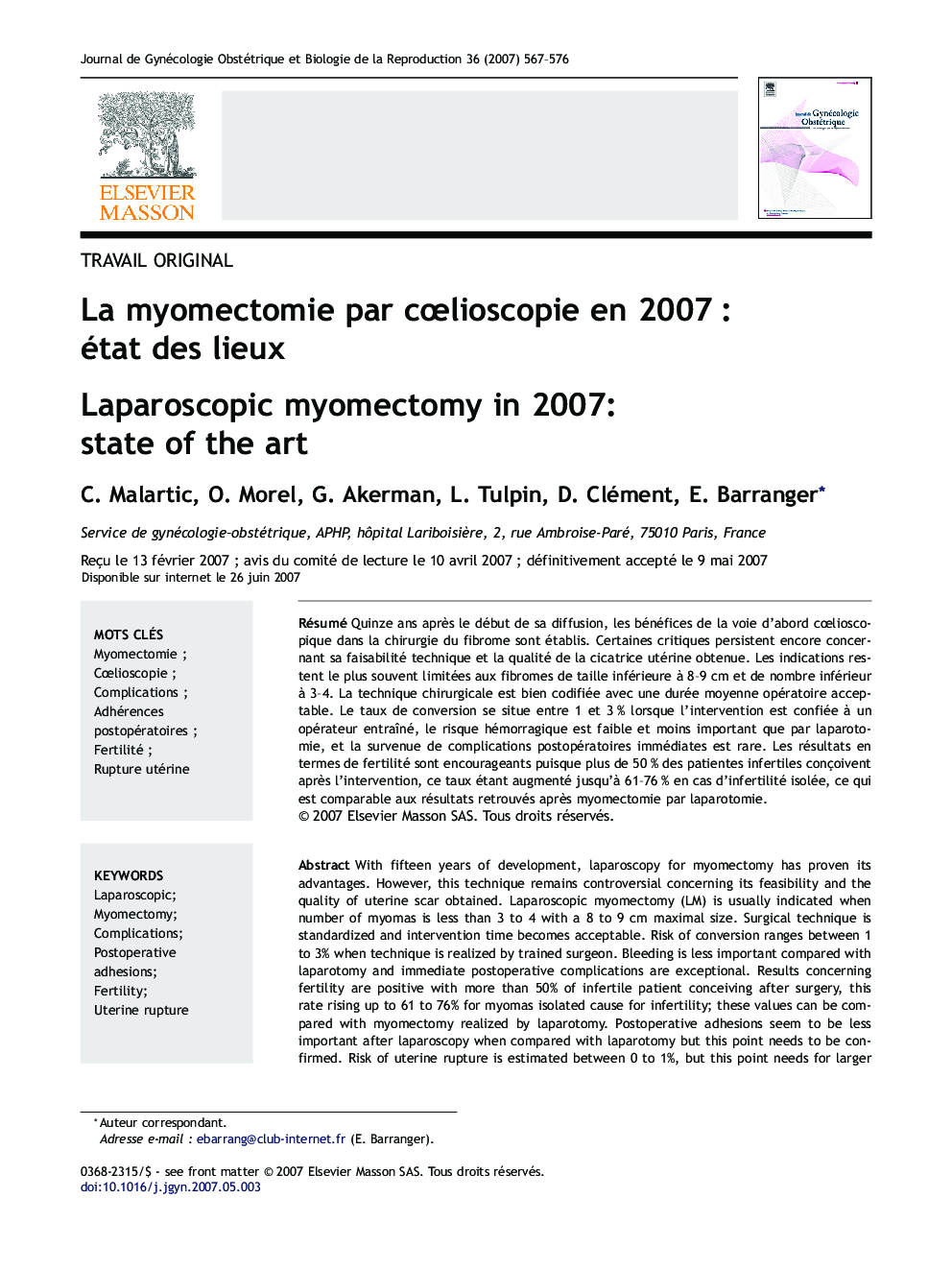| Article ID | Journal | Published Year | Pages | File Type |
|---|---|---|---|---|
| 3273558 | Journal de Gynécologie Obstétrique et Biologie de la Reproduction | 2007 | 10 Pages |
Abstract
With fifteen years of development, laparoscopy for myomectomy has proven its advantages. However, this technique remains controversial concerning its feasibility and the quality of uterine scar obtained. Laparoscopic myomectomy (LM) is usually indicated when number of myomas is less than 3 to 4 with a 8 to 9Â cm maximal size. Surgical technique is standardized and intervention time becomes acceptable. Risk of conversion ranges between 1 to 3% when technique is realized by trained surgeon. Bleeding is less important compared with laparotomy and immediate postoperative complications are exceptional. Results concerning fertility are positive with more than 50% of infertile patient conceiving after surgery, this rate rising up to 61 to 76% for myomas isolated cause for infertility; these values can be compared with myomectomy realized by laparotomy. Postoperative adhesions seem to be less important after laparoscopy when compared with laparotomy but this point needs to be confirmed. Risk of uterine rupture is estimated between 0 to 1%, but this point needs for larger series evaluation and needs to be compared with pregnancies after laparotomy. Laparoscopic myomectomy is a feasible technique, safe for patients waiting for conception and has proven its interest in case of infertility.
Keywords
Related Topics
Health Sciences
Medicine and Dentistry
Endocrinology, Diabetes and Metabolism
Authors
C. Malartic, O. Morel, G. Akerman, L. Tulpin, D. Clément, E. Barranger,
